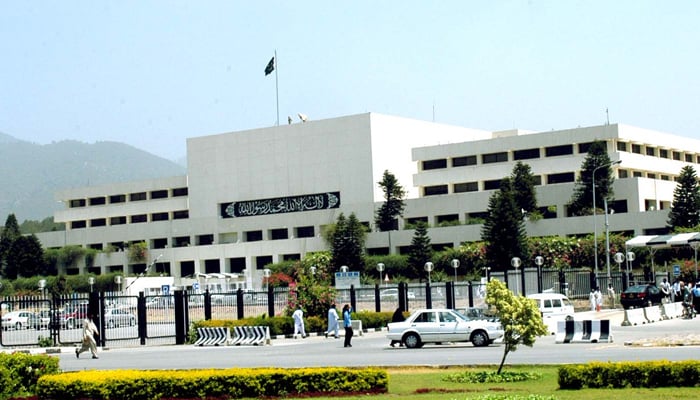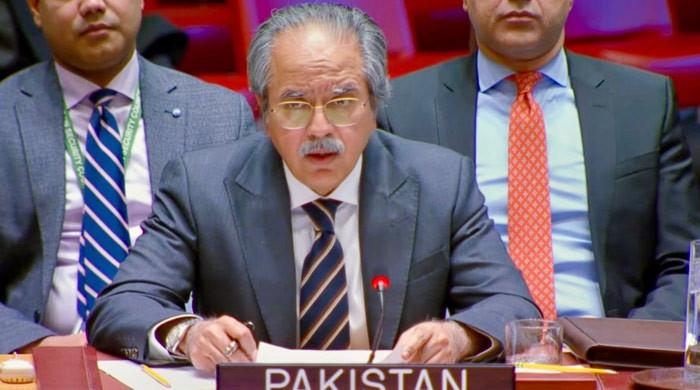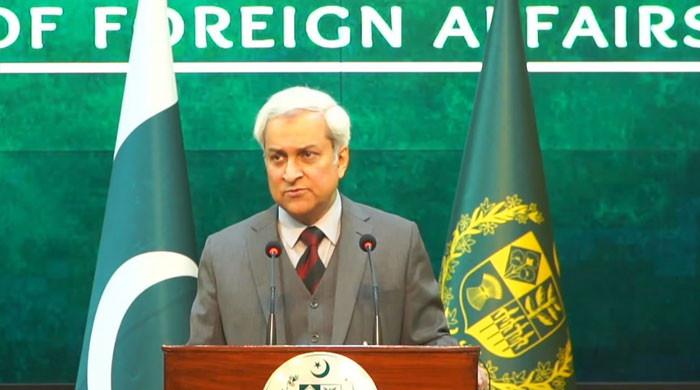Ordinances and Prorogation
Legislation is not the job of the president or the cabinet alone; it is the job of the legislature
November 11, 2021

It’s no coincidence that the Eiffel Tower, Golden Gate Bridge, and the Pyramids all consist of triangles. When pressure is applied to one side or corner of a triangle, the other two push back. Tasked with creating a structure that requires stability, architects regularly turn to their trusty three-sided friend.
It’s the same with the architects of many constitutions, including ours. There is trigonometry in our trichotomy — the executive, the legislature, and the judiciary. But in a parliamentary democracy, there are good reasons for allowing the legislature — the people’s side — extra length.
But because the most stable triangle is the equilateral triangle – where every side of the triangle is equal — any attempts at increasing the length of a side are given the stink eye. This is why we criticise senseless suo motus by the judiciary and unconstitutional legislation by parliament. This is also why we criticise the executive’s guilty pleasure — the ordinance. And while recent times have seen much criticism and little guilt, the infatuation with the ordinance far predates this government.
An ordinance, under Article 89 of the constitution, is a law passed by the president, acting on the cabinet’s advice — in the provincial setting the governor has the same power, but to keep things simple, we’ll stick to presidential ordinances.
Usually, legislation is not the job of the president or the cabinet alone; it is the job of the legislature. For this reason, ordinances can only be passed in exceptional circumstances.
For one, at least one house of parliament must not be in session. That is to say that parliament could not, itself, pass the law. Second, the president must be "satisfied that circumstances exist which render it necessary to take immediate action". Recognising that the president is only temporarily filling in for the legislature, the constitution says that an ordinance must be placed before parliament within a hundred and twenty days.
Many ordinances are, indeed, good law. But that is beside the point. The concern with ordinances isn’t with their substance so much as it is with their form. Unless there’s the kind of emergency that Article 89 is worried about, then all laws — good or bad — must be passed by parliament. Debates when the provision was being drafted revolved around very narrow circumstances, such as meeting unforeseen expenditures when the National Assembly had been dissolved.
A stubborn Opposition isn’t that kind of emergency. Legislation is about a lot more than ink and paper; it’s also about who is willing to back it. Your law may well be the second coming of the Magna Carta, but if you’re only legislating through an ordinance to bypass the four hundred other members of parliament, then this is where courts are supposed to step in.
And just as it isn’t the executive’s job to legislate, it obviously isn’t the court’s job to do so either. It isn’t for a court to decide if a law is good or bad. It is for the court to determine if the constitution allows it. In the case of an ordinance, it means determining whether or not the president was actually "satisfied" that the circumstances warranted emergency legislation through an ordinance.
In India, where the president has a similar ordinance-making power, courts review ordinances under the Bommai standard. They review the material placed on record and only check to see if it was "relevant" to the existence of an emergency. And that is all. Their purpose isn’t to replace the president’s opinion with their own and decide if an ordinance was the right choice based on their information. It’s largely the same in Pakistan.
But while much has been written — by the bench and in broadsheet — about the relevance of material indicating the urgency of an ordinance, significantly less has been said about the most common trigger for an ordinance: prorogation.
Under Article 54 of the constitution, it is the president who summons a session of the National Assembly, the Senate, or both. A session ordinarily consists of several ‘sittings’ over the course of multiple days, weeks, or months. And while individual sittings can be adjourned or suspended by the speaker or the chairman, the whole session can only be terminated by the president — through prorogation or dissolution.
A suspension is a brief interruption in a sitting and an adjournment is a hiatus of the sitting until another day. Prorogation is like an adjournment, but for the whole session. And dissolution has historically happened when the assembly has no confidence in the prime minister, the government completes its five year term, or someone decides that won’t be necessary.
For the most part, these interruptions are fairly routine. An average parliamentary year in Pakistan sees over a dozen prorogations. But there is a significant difference between adjournments and prorogations. In the latter case, this ordinary event triggers an extraordinary possibility: the ordinance.
Here’s where this gets interesting. It is the president, acting on the advice of the prime minister, who decides that it is time to prorogue a session of the assembly. And it is also the same president, acting on the advice of the same prime minister (along with the rest of the cabinet), who decides that emergency legislation is required through an ordinance.
And while the president and the prime minister aren’t necessarily responsible for creating the emergency, their prorogation is directly responsible for creating the need for a response through an ordinance. And this isn’t just because they prorogued the session, but also because they didn’t summon a new one.
Consider that on Halloween of 2019, President Arif Alvi passed eight ordinances in one day, having prorogued parliament less than a month ago.
So you would think that if courts review the ‘advice’ leading up to an ordinance, they would also review the advice that basically created the need for an ordinance to begin with. Not so. Courts have reviewed the nuclear option — dissolution — multiple times, but never in our constitutional history has a prorogation been judicially reviewed.
Courts mention suspicious timelines every now and then, but have never gone so far as to really get into the substance of a prorogation.
In fact, even our constituent assembly debates have been quite silent on the possibility of misuse of the power to prorogue. Which is rather odd considering prorogation developed as a means for English monarchs to subvert parliament.
But 2019 saw a significant step forward for judicial review of prorogation in the UK. In Miller II, the UK Supreme Court held Boris Johnson’s advice to the Queen to prorogue parliament in the days leading up to Brexit to frustrate the ability of parliament to carry out its constitutional functions ‘without reasonable justification’. The prorogation was declared to be null and void.
Prorogation in Pakistan is less extreme than in the UK. Here, parliament is to meet for a minimum of a hundred and thirty days in a year, and there can’t be more than a hundred and twenty days between two sessions. Most significantly for parliamentarians who only complain of legislation through ordinances, if one-fourth of the National Assembly moves a motion to summon the National Assembly, the speaker must reconvene it. This isn’t enough to prevent the prorogation of the Senate, though.
But regardless of the differences, there is sufficient structural symmetry with the Pakistani variant. More importantly, it would only be in line with our own jurisprudence on judicial review of executive actions.
But it is important for the increase of the length of one length of this triangle to not be countered by an extension of another side. Such judicial review must be limited in its scope, as with the review of an ordinance. Courts could consider whether there was even any application of mind leading up to the prorogation.
This is complicated by the fact that the annual calendar for the sessions of the assembly is provided at the beginning of the year, but the calendar isn’t binding. The minimum number of a hundred and thirty working days is a floor, not a ceiling. Any government that is serious about legislation should aspire for more than that.
This means that courts can consider if any thought was given to pending legislation before it, particularly where the same legislation is later passed through an ordinance. Alternatively, prorogation could be considered indirectly, where the review of the advice to promulgate an ordinance could consider why summoning parliament isn’t a valid option. And so on.
To be sure, courts are justified in hesitating in such intrusions. The judiciary hardly needs another pie to prod at. But some kind of balance must be struck. Because looking the other way when prorogation is used to sideline parliament isn’t judicial restraint. It is the abdication of constitutional duty.
The writer is a lawyer. He can be reached at [email protected] and tweets @brainmasalaar
Originally published in The News











